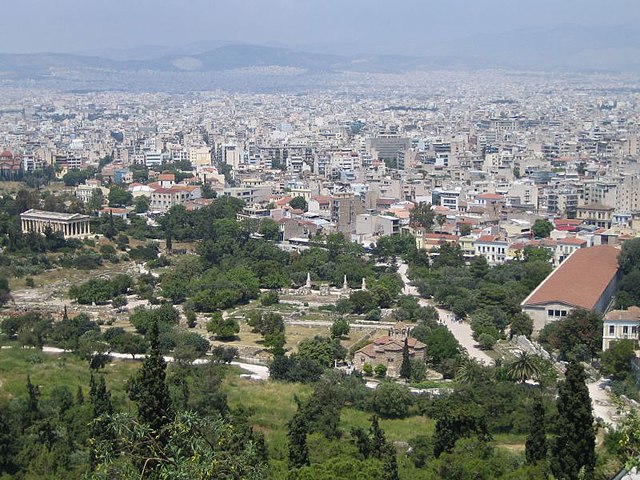Stoa Basileios, meaning Royal Stoa, was a Doric stoa in the northwestern corner of the Athenian Agora, which was built in the 6th century BC, substantially altered in the 5th century BC, and then carefully preserved until the mid-second century AD. It is among the smallest known Greek stoas, but had great symbolic significance as the seat of the Athenian King Archon, repository of Athens' laws, and site of "the stone" on which incoming magistrates swore their oath of office.
Remains of the Stoa Basileios in the Athenian Agora (looking south); the lithos is located left of centre
Torso of S 2370, colossal female statue, probably of Themis ("Justice"), which stood in front of the Stoa Basileios from the 330s BC.
View of the Stoa Basileios from the southwest, looking across the Athens-Piraeus Electric Railway.
The ancient Agora of Athens is the best-known example of an ancient Greek agora, located to the northwest of the Acropolis and bounded on the south by the hill of the Areopagus and on the west by the hill known as the Agoraios Kolonos, also called Market Hill. The Agora's initial use was for a commercial, assembly, or residential gathering place.
Ancient Agora of Athens
View of the ancient agora. The temple of Hephaestus is to the left and the Stoa of Attalos to the right.
The entrance to the Odeon of Agrippa
The Temple of Hephaestus






